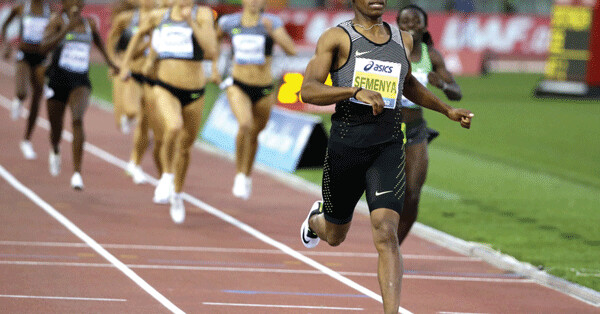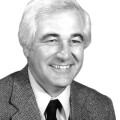News & Articles
Browse all content by date.

Human Life Is More Interesting Than Ever
Life is so much more fascinating than just 25 years ago. There’s something that tantalizes me every day. We don’t know whether the operation was considered to be successful in 2017 when a Chinese doctor claimed he had transplanted a head of a corpse onto a cadaver in an 18-hour operation. Actually Italian Dr. Sergio Canavero has been planning a live head transplant of a head for a number of years. He thinks it will take about 50 specialists and staff and about a day and half to do the job right. He even has a volunteer. Russian Valery Spirdonov at 33 has a sound brain but suffers from a muscle–wasting disease called Werding-Huffman, a rare disorder that destroys muscles and nerves within about five years. There is no cure, so in 2015 he volunteered to be the world’s first head transplant. Spiridonov, now a Florida resident, has decided to wait for the transplant because he says his condition has stabilized and he has recently married, has a child, and is in charge of his own company. Critics of the doctor claim our technology is not up to a head transplant---yet.
The case of South African runner Caster Semenya has intrigued me for a decade. At age 18 she was winning almost all races she entered from the 400 meters to a mile. She won Olympic gold medals in the 800-meter event in 2012 and 2016 and has also won the gold in the same event at the International Association of Athletics Federation (IAAF) World Championships three times. Caster, born intersex, was raised as a girl but has a condition diagnosed as hyperandrogenism. I’ll get to that later. Since before Lucy and Adam and Eve millions of years ago, most species on earth have gender fluidity. The Norwegians examined homosexuality in the leading species and discovered it was present in the top 1500 species—and then quit trying. Many gender identities have been added to straight and gay in the last 15 years. The following is a partial list of current members of the LBGTQ community in alphabetical order: androgynous, asexual, bisexual, cisgender, gay, gender-expansive, gender-fluid, gender-nonconforming, genderqueer, intersex, lesbian, non-binary, pansexual, and transgender. Each of these genders has different sexual interests. Gender identity is defined as “one’s innermost concept of self as male, female, a blend of both or neither—how individuals perceive themselves and what they call themselves. One’s gender identity can be the same or different from their sex assigned at birth.” In Caster’s case she was probably born “intersex” with male and female genitalia—or parts thereof.
Transplanting Heads Is In The Future But Attitudes About Gays Have Changed
Medical organizations have estimated that between 5% and 10% of a population is gay. That means that the U.S. has between 15 million and 30 million people who have some of the elements of gender identity listed above. Attitudes about gays in the U.S. have changed dramatically in the 21st Century. A recent NBC/Wall Street Journal poll indicated that over two-thirds of Americans are either “enthusiastic or comfortable” with a presidential candidate who is gay or lesbian. The same number believes that homosexuality should be accepted and same-sex marriage should be legal. Even American Christians in an American Values Atlas survey in April showed that all Christians support protections for the LBGTQ community, with mainline Protestants at 71% and white evangelicals at 54% for and 38% against.
However, an editorial in the Charlotte Observer quoted the Reverend Franklin Graham’s thoughts that gay presidential candidate Pete Buttigieg “had a lot of nerve to be publicly gay. Homosexuality is not something to be flaunted.” It expressed that Graham is not the Christian leader he once was although his organization does wonderful work around the world. It added: “He’s also one of whose words have become increasingly and gloriously irrelevant. He has marginalized himself with his vocal support of President Donald Trump. Like other supposed faith leaders, Graham has been caught in the trap of politically supporting a man with so many moral failings. How do you tell a gay presidential candidate to repent but utter hardly a peep about the philandering, dishonest man who now holds the office?”
The Question: Should Athletic Competitors Be Forced To Change Body Conditions?
Casper has hyperandrogenism, a medical condition characterized by excessive levels of androgens; that is, male sex hormones such as testosterone. Some babies are born with a female disorder called hyperestrogenism; that is, an excess of estrogen. Hyperandrogenism occurs in 5-10% of females of reproductive age, and is usually diagnosed in late adolescence. The signs in intersex women are male pattern hair growth, masculine appearance, oily skin, and deepening of voice. The point is, testosterone is also produced by females and is necessary because it affects metabolism, liver function, bones, muscle, skin, and the brain.
Because Caster and other intersex people tend to dominate races in track events, the IAAF has ruled that they must reduce their levels of testosterone by taking hormones that lower the level. This will give other females more opportunities to compete in track events. The IAAF used research published in the British Journal of Sports Medicine that high levels of testosterone give Caster and others with hyperandrogenism a 1.8% performance advantage. The advantages in other events were greater: 2.9% in the pole vault and 4.5% in the hammer throw. Only the 400 and 800 meter events were affected by the ruling. Other research over the years has not established that testosterone makes a difference. Caster and others are appealing the ruling, stating they are born with this condition and should not be forced to take hormones to alter “their” natural condition. They and their defenders reveal other athletes that have “unusual” physiques and characteristics.
Kareem Abdul-Jabbar At 7’ 2” Dominated Pro Basketball For 20 Years
There is no record that Kareem took an overdose of growth hormone during his teen years to reach his height. Should high schools, colleges, and the NBA have ruled that anyone over 6’ 7” could not play basketball? Maybe a field goal scored by a player over 6’ 7” should count only one point and a free throw ½ point. If Senegal’s national basketball team plays in the 2020 Olympics they will have 7’ 6” Tacko Fall at center. Senegal is known for its tall men. Maybe the team will average 7’2”. Should they be eligible? Should Serena Williams be banned from women’s tennis because she has a physique like a Green Bay Packer linebacker?
Michael Phelps with his 28 gold medals dominated Olympic swimming for over a decade. He was born “genetically” to be a swimmer. His arms were longer than ”normal” and had huge “flipper” hands. He had double-jointed ankles to give his swim kick an unusual range. He had great endurance because his body produced half the lactic acid of a typical athlete. Since lactic acid causes fatigue, he was a great finisher in the longer events. Should he have his ankles operated on and take a medicine to boost his lactic acid levels?
How many female Olympic gymnasts are much taller than 5’? Coaches say the gymnastic events dictate that taller competitors just cannot compete with the shorter girls. Should we place a limit at 5’ 2”?
Casey Legler swam for France in the 1996 Olympics and broke an Olympic record for an event—in a practice swim—but bombed out in the real event the next day. She might have been born intersex and was certainly part of the LBGTQ community because she married a lesbian later in her career. At age 12 she was 6’ 2”and had a degenerative condition of the connective tissue called Erlhos Danlos Syndrome. This disease gave her genetic advantages. She had very long arms (like Michael Phelps), completely disproportionate to the average wingspan of the human body. Her hands and feet were about 15% larger than the average male, and she said she used them like flippers and paddles. She was virtually unstoppable in the water. Remember an Australian swimmer named Ian Thorpe? His feet were so large his teammates called him “Flippers.”
Casey is an important supporter of the appeal of Caster: “Caster Semenya is a gift to her sport. For a board to rule in favor of artificially inhibiting her performance in order to level the playing field is the antithesis of sportsmanship. No conclusive evidence exists to suggest that testosterone correlates to enhanced performance. A true phenomenon, Semenya should be celebrated for her contribution and accomplishments, not punished for her gifts….How dare they limit a phenomenal athlete for being born this way.”
Genetic Scientists Are Discovering All Kinds Of Things About The Human Body
A baby girl born in a Seattle hospital had a very big clitoris that closely resembled a penis. At age two she had an operation to reduce its size. Blood and cell tests at the time revealed she had many cells that were genetically male and that they were spread throughout her body. Doctors determined that she was the result of two eggs that had been fertilized by different sperm—one with male chromosomes and the other with female chromosomes. Usually this would result in twins, a boy and a girl. But these eggs had fused producing a single “chimeric” person. Chimeric persons are composed of cells originating from two—or more—separate eggs. (Chimerism comes from the Greek word describing a creature composed from parts of different animals.)
The first human to be described as chimeric was a married woman who decided to give blood in 1953. When her blood was analyzed it was discovered she had both A and O types—which was not supposed to happen. Doctors were mystified until she revealed she had had a twin brother who died when he was three months old. He had type A blood. Somehow their blood types had merged! The genetic scientists are discovering that chimerism is fairly common. A Danish study of the blood of 154 girls ages 10 to 15 revealed that 13% of the girls had blood cells with Y chromosomes, the male chromosome. The scientists say the male cells probably originated with an older brother and had then crossed to the mother where they survived until the daughter came along.
So many things have happened to human beings in genetics recently, I thought of Miranda’s speech from Shakespeare’s “The Tempest”: “O wonder! How many goodly creatures are there here! How beauteous mankind is! O brave new world, that has such people in it!”
I think Caster Semenya is a goodly creature, a beautiful one, who is living in our brave new world that is constantly changing. On May 3 Caster won her 30th straight 800-meter race in Doha, Qatar—in the third fastest time of her career and the eighth fastest outdoor time at age 28. When she was asked whether she would ever take a testosterone-reducing drug, she said “Hell, no! No man, or any other human, can stop me from running.”
| Tweet |


